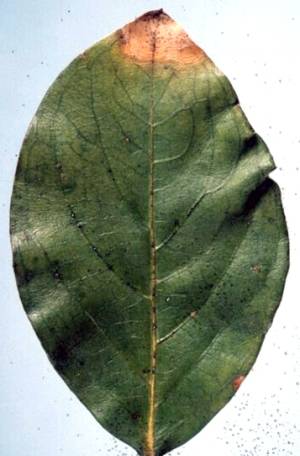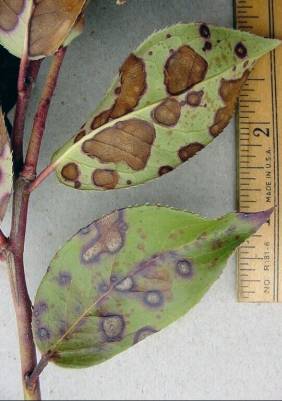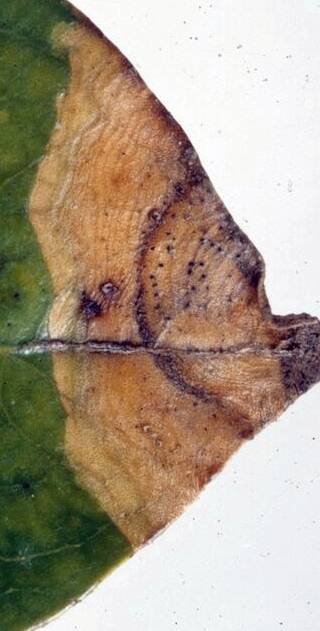Phyllosticta Leaf Spot of Ornamentals
 Causal Agent
Causal Agent
Phyllosticta spp.
Hosts
Boxelder, cherry, crape myrtle, holly, leucothoe, magnolia, maple, sycamore, and many others.
Symptoms
Early symptoms include small, circular or oval spots. The spots may be beige, gray,
brown, or black in color. Spots will enlarge and if numerous spots are present, they
may coalesce. Sometimes, the spots will drop out and leave ragged holes in the leaves.

Control
Fallen leaves should be raked up and discarded in the trash (do not compost). In early spring, fertilize trees that have been affected by Phyllosticta leaf spot. Prune trees to thin the canopy and promote air circulation. Dead or weak branches should be removed. These cultural methods are generally sufficient in controlling leaf spots caused by Phyllosticta spp. Fungicides are not recommended for controlling this disease. Please contact your local county extension office for current information.



